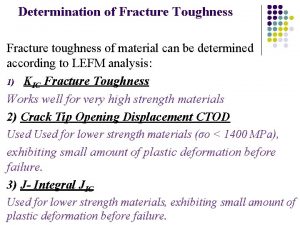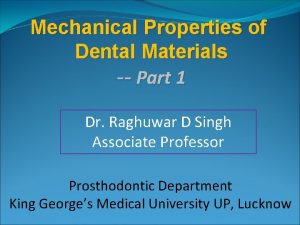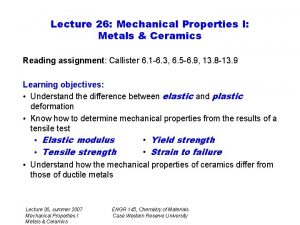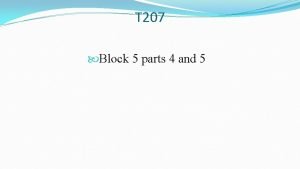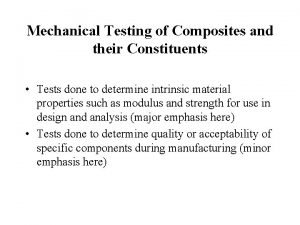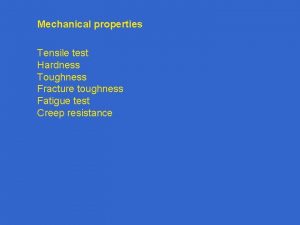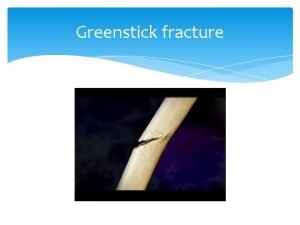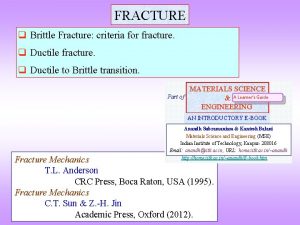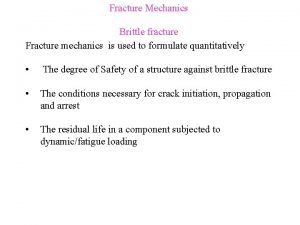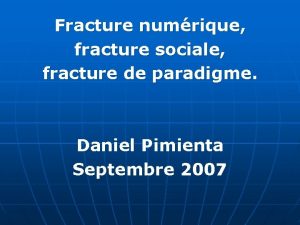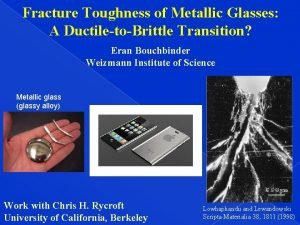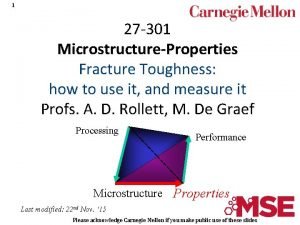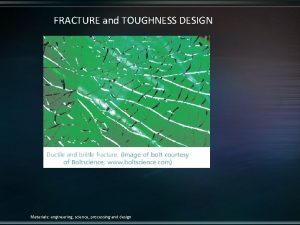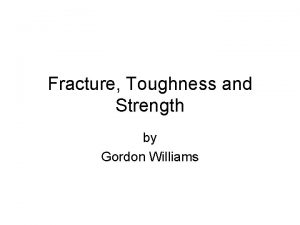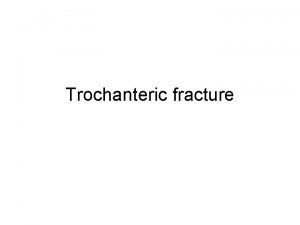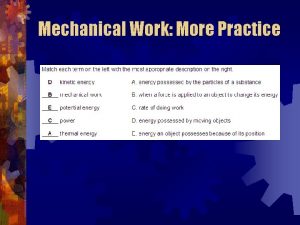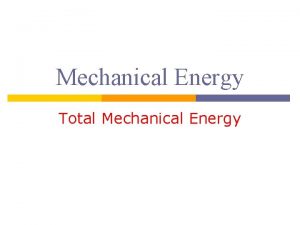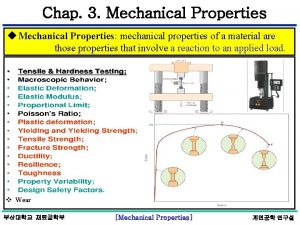Last class More mechanical testing Fracture toughness precracked






















- Slides: 22

Last class More mechanical testing Fracture toughness - pre-cracked specimen Creep - constant load, elevated temperature Fatigue - constant load, S/N curves, endurance limit Fracture surfaces Brittle vs. ductile Crack origins, chevron markings Beachmarks

Today Atom arrangements in metals Dislocations

Crystal structures of materials where are the atoms? Polymers - mostly not crystalline structure extremely complicated Ceramic materials - complicated many different types of atom arrangements Metals - really simple - most have one of three types

Crystal structures of pure metals Most pure metals exhibit one of three types 1. cubic close packing (ccp or A 1) 2. hexagonal close packing (hcp or A 3) 3. A 2 (almost universally referred to by the confusing notation 'bcc')

Crystal structures of pure metals cubic close-packed (ccp) close-packed plane of atoms

Crystal structures of pure metals cubic close-packed (ccp) ABCABC layer sequence close-packed plane of atoms A C C B B A A

Crystal structures of pure metals hexagonal close-packed (hcp) Zn, Cd, Co, Ti, Zr…… close-packed plane of atoms hexagon

Crystal structures of pure metals hexagonal close-packed (hcp) ABAB layer sequence B close-packed plane of atoms A B A

Crystal structures of pure metals A 2 structure - so-called "bcc" metal structure almost close-packed atom planes Fe, V, Cr, Mo, W, Ta…… some empty space

Dislocations And now…the rest of the story (on plastic deformation)! Mechanism of plastic deformation connected with existence of defects in atom arrangement known as dislocations Ideally, atom arrangement within a crystal repeats perfectly Mistakes (defects) in repetition occur in reality

Dislocations Situation is this: strength of a material w/ no dislocations is 20 -100 times greater than ordinary materials Think of edge dislocation as extra plane of atoms partially inserted into crystal

Dislocations These things are real! We can see them! (in an electron microscope) Dislocation line 0. 00001 cm

Dislocations Move under a shear stress

Dislocations Move under a shear stress

Dislocations Move under a shear stress

Dislocations Move under a shear stress

Dislocations Move under a shear stress

Dislocations Move under a shear stress

Dislocations Permanent change in shape results Dislocation has disappeared Dislocations move along a slip plane

Dislocations Watch a real one move!

Dislocations If hundreds of thousands of dislocations move through material, microscopic steps produced in the surface as below

Dislocations - Initial overview Material w/ NO dislocations is very strong But it cannot be deformed plastically Dislocations weaken a material But dislocations make plastic deformation possible
 Lirik lagu more more more we praise you
Lirik lagu more more more we praise you More more more i want more more more more we praise you
More more more i want more more more more we praise you Toughness example
Toughness example Ductile vs brittle fracture
Ductile vs brittle fracture Strain energy formula
Strain energy formula Flexibility in dental materials
Flexibility in dental materials Workshop test for toughness
Workshop test for toughness Modulus of resilience
Modulus of resilience Toughness units
Toughness units Sas mental toughness
Sas mental toughness Mechanical fracture
Mechanical fracture Actual mechanical advantage vs ideal mechanical advantage
Actual mechanical advantage vs ideal mechanical advantage Westmoreland testing
Westmoreland testing Mechanical testing of composites
Mechanical testing of composites Mechanical weathering is more rapid in warm wet climates
Mechanical weathering is more rapid in warm wet climates What is domain test
What is domain test Motivational overview in software testing
Motivational overview in software testing Data flow testing strategies in software testing
Data flow testing strategies in software testing Positive negative testing
Positive negative testing Cs 3250
Cs 3250 Globalization testing
Globalization testing Neighborhood integration testing
Neighborhood integration testing Language testing
Language testing


